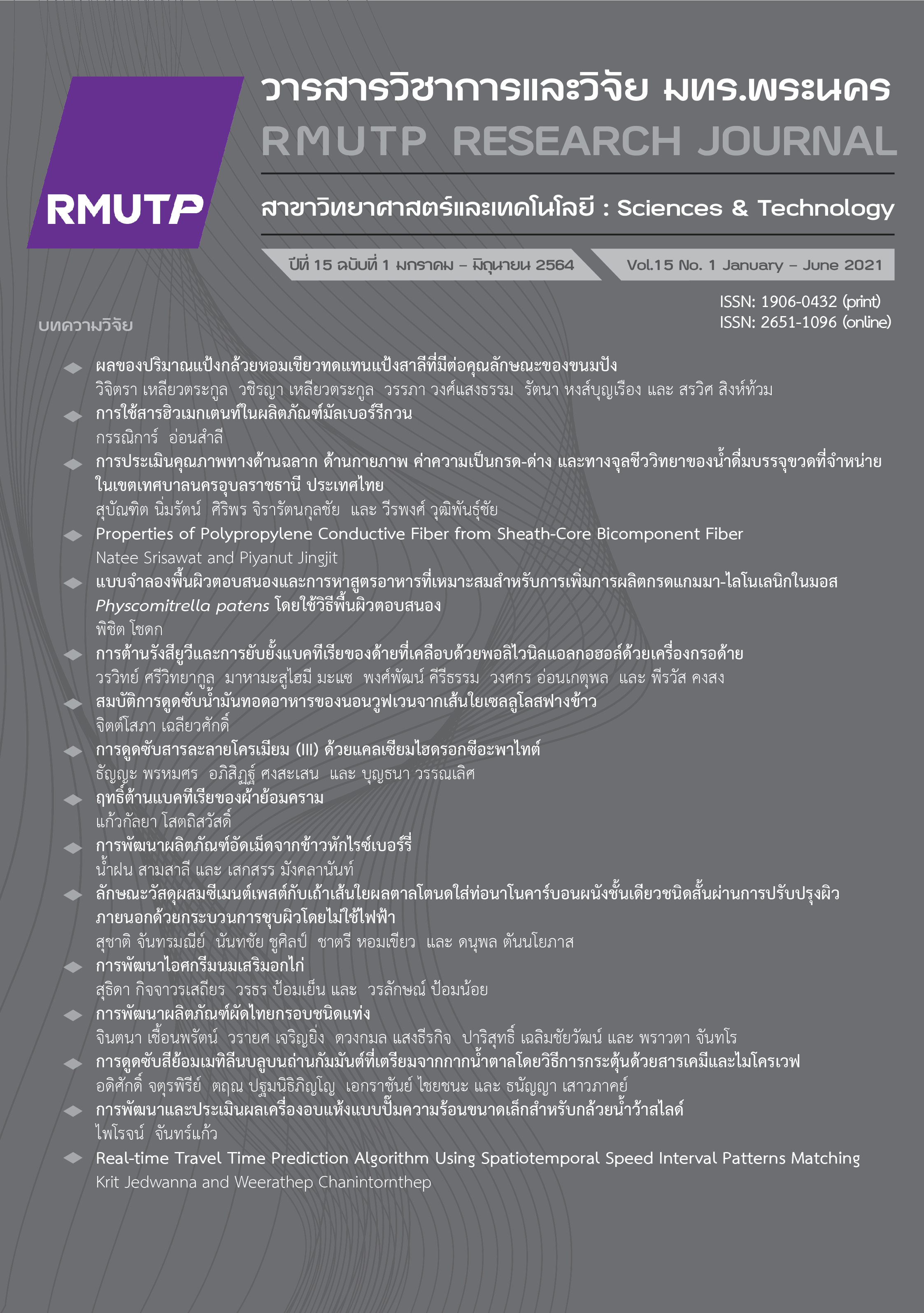Adsorption of Chromium (III) Solution Using Calcium Hydroxyapatite
Main Article Content
Abstract
Chromium (III) is an inorganic salt being used as corrosion inhibitor, plating agents, surface treating agents, furniture, furnishings, and textile printing, and etc. The discharge of industrial waste water containing chromium (III) into the water source was toxic to the aquatic lives, and some parts accumulate in the soil, chromium (III) reduces the growth of plants, reduced photosynthesis, inhibit the enzyme activity, imbalanced in plants, and reduced productivity, and etc. For this reason, method to remove it before discharge the effluent into the water source is necessary. The use of apatite materials for adsorption, and immobilization of various pollutants was a technique that was more likely to be used. Due to its high adsorbency, easy to use, and environmentally friendly. The purpose of this research was to study the preparation of calcium hydroxyapatite, structural characterization of calcium hydroxyapatite by X-ray diffraction technique, adsorption study of chromium solution with calcium hydroxyapatite in various conditions, and the determination of adsorption isotherm. The results showed that the optimum contact time of calcium hydroxyapatite and chromium solution was 3 hours. Most adsorption works well at a pH of around 6.76. Considering the amount of chromium (III) adsorbed at equilibrium (q), it was found that the calcium hydroxyapatite with 10 % zinc added that has been calcined to 400 OC, and the calcium hydroxyapatite with 15 % zinc added that has been calcined to 800 OC were to adsorb chromium (III) more than other sorbents. The adsorption isotherm was suited with Fruendlich and Langmuir. The calcium hydroxyapatite with 10 %, and 15 % zinc added that has been calcined to 400 OC had the highest adsorption capacity (qm) up to 178.57, and 181.82 mg/g respectively. In addition, it was found that calcium hydroxyapatite, which heated to 800 degrees Celsius, can decompose tricalciumphosphate.
Article Details
References
Ministry of the environment of Japan, “Trivalent chromium compound,” Profiles of the initial environmental risk assess- ment of chemical, vol. 8, pp. 1-3, 2009.
H. Oliveira, “Chromium as an environmental pollutant: Insight on induced plant toxicity,” Journal of Botany, vol. 2012, pp. 1-8, May 2012.
M. A. Atieh et al., “Removal of Chromium (III) from water by using modified and non-modified carbon nanotubes,” Journal of Nanomaterials, vol. 2010, pp. 1-9, Jan. 2010.
M. Ibrahim, M. Labaki, J.-M. Giraudon, and J.-F. Lamonier, “Hydroxyapatite, a multifunctional material for air, water and soil pollution control: A review,” Journal of Hazardous Materials, vol. 383, p. 121139, Feb. 2020.
N. Angelescu, D.N. Ungureanu and F.V. Anghelina, “Synthesis and characterization of hydroxyapatite obtained in different experimental conditions,” The Scientific Bulletin of Valahia University – Materials and Mechanics, vol. 9, pp. 15–18, 2011.
R. Sahlil Miraz Mohamed and N. Darman, “Synthesis and characterization of hydroxyapatite nanoparticle,” Malaysian Journal of Analytical Sciences, vol. 21, no. 1, pp. 136–148, Feb. 2017.
S. S. A. Abidi and Q. Murtaza, “Synthesis and Characterization of Nano-hydroxyapatite Powder Using Wet Chemical Precipitation Reaction,” Journal of Materials Sciences and Technology, vol. 30, no. 4, p. 307, Apr. 2014.
G. D. Venkatasubbu, S. Ramasamy, V. Ramakrishnan and J. Kumar, “Nanocrystalline hydroxyapatite and zinc-doped hydroxyapatite as carrier material for controlled delivery of ciprofloxacin,” 3 Biotech, vol. 1, no. 3, pp. 173–186, Oct. 2011.
J.S.J. Hargreaves, “Some considerations, related to the use of the Scherrer equation in powder X-ray diffraction as applied to heterogeneous catalysts,” Catalysis Structure & Reactivity, vol. 2, no. 1-4, pp. 33–37, Oct. 2016.
F. Gode and E. Pehlivan, “A comparative study of two, chelating ion-exchange resins for the removal of chromium (III) from aqueous solution,” Journal ofnHazardous Materials, vol. B100, no. 1-3, pp. 231–243, Jun. 2003.
M. Rafatullah, O. Sulaiman, R. Hashim, and A. Ahmad, “Adsorption of copper (II), chromium (III), nickel (II) and lead (II) ions from aqueous solutions by meranti sawdust,” Journal of hazardous materials, vol. 170, pp. 969–977, Jun. 2009.
J.R. Guarín-Romero, P. Rodríguez-Estupiñán, L. Giraldo and J. C. Moreno-Piraján, “Simple and competitive adsorption study of nickel (II) and chromium (III) on the surface of the brown algae Durvillaea antarctica biomass,” American Chemical Society Omega, vol. 4 pp. 18147–18158, Oct. 2019.


